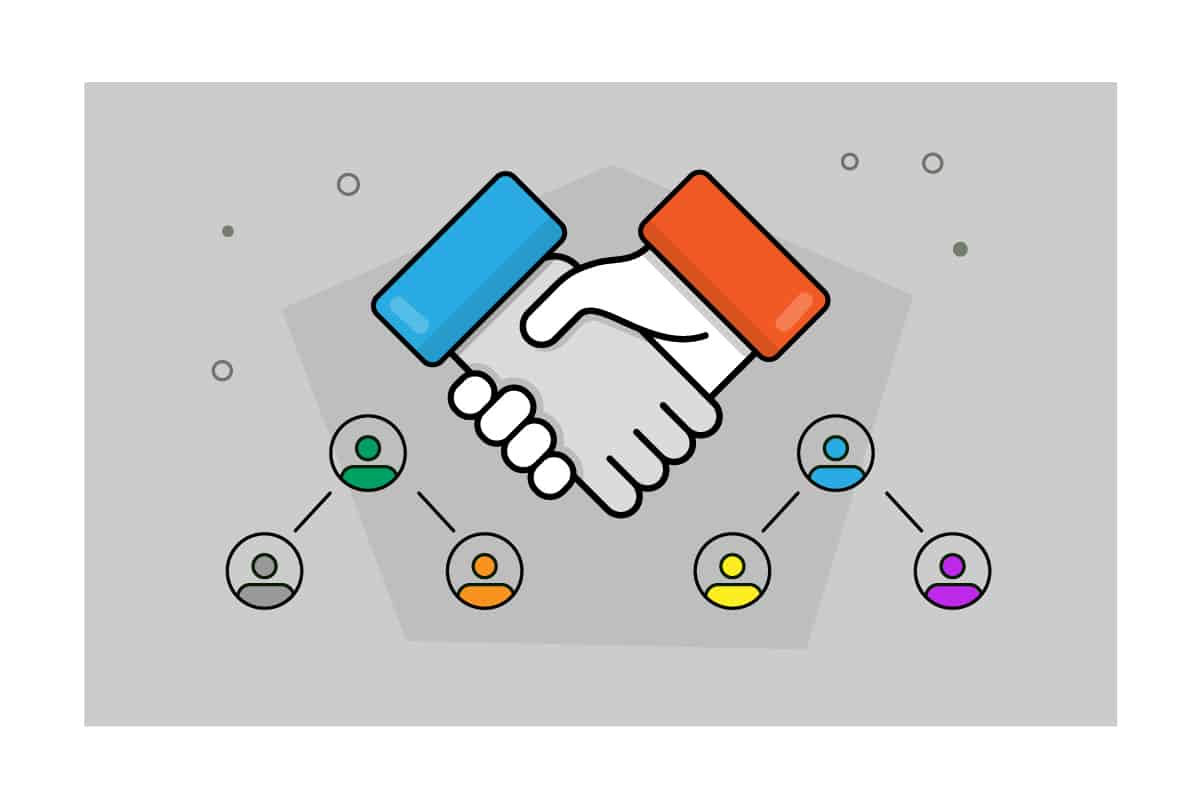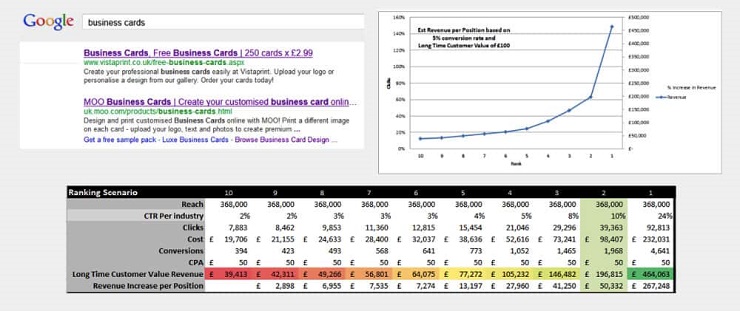Every agency needs clients. You can’t build your reputation, brand, or revenue without building up your portfolio. In fact, how to get more clients is one of the most common conversations you’ll hear if you eavesdrop on pretty much any agency’s team, regardless of the stage they’re at.
Fundamentally, the way you get more agency clients can be broken down into two stages. The first thing you need to do is generate and then nurture leads. Second, you need to convert the leads into customers.
Sounds simple when you put it that way, but this is a complex process that demands a lot of attention. Statistics published by Hubspot show that 74% of companies pinpointed converting leads into customers as their main priority. It was well ahead of things like growing web traffic and boosting revenue from existing customers.
In this article, I’ll share the strategies we use at my agency to consistently land five-figure clients, including McCormick, an American food company listed on the New York Stock Exchange that manufactures, distributes and markets spices. As a bonus, I will also jump on a Skype call with one of the people who leave a comment on this article, in order to help you use these strategies. If you have an agency and you want some advice, let me know your biggest challenge/goal/question in landing clients and I will choose one commenter to answer via a free Skype call.
Whether you’re the lucky winner or not, I believe you’ll be able to apply these tips to grow your own agency. These are tips that will be useful for agency owners and consultants looking to close potential customers.
EXCLUSIVE FREE TRAINING: Successful Founders Teach You How to Start and Grow an Online Business
Understanding Your Client and Building Trust
It might sound strange, but the first thing you need to do if you want to get more agency clients is to stop thinking like an agency. You need to put yourself in your customers’ shoes.
That may seem obvious, but many agencies and professionals fail to do this. Instead, they adopt a one-size-fits-all, what’s in it for me strategy.
That’s not how to go about it.
Every client has different needs, so you have to alter the way you approach your leads based on those needs, just as you would personalize how you work with them once they become clients.
In order to build trust with a lead, you must first take the time to understand them. This starts with understanding the person you are talking to. Marketers often write about some main types of clients that agencies can come across. Often these clients are broken down into archetypes like the four below:
- Lawyers
- Artists
- Skeptics
- Empathizers
Now, I know you’re going to tell me that you can’t divvy up everyone you meet into four simple categories, and you’d be right. These groupings merely force you to recognize that a business pitch is more than just an offer of services. Rather, it is underpinned by the personal relationship you develop with each client.
Let’s take a look at each category, through the lens of how to get more agency clients of each type.
1. Lawyers
Lawyers are orderly, serious, and professional individuals. They are not impressed by gimmicks. Lawyers don’t want to make friends; they simply want to do business. If you want to work with these clients, your pitch should be straightforward and precise. You must lay out what you can do for them in detail and back up your claims with evidence. Use data and recommendation to persuade these people.
2. Artists
Artists are the exact opposite of lawyers. They are creative and innovative, but tend to be disorganized. In addition, they are all about blue sky thinking and prefer the big picture. They don’t want to get bogged down in the tiny details. If you want to work with an artist, you’ll need to appeal to their creativity and passion. Friendly, less formal communication is key. Try to connect with them on a personal level.
3. Skeptics
To land a skeptic, well, you’ll have to work very hard. Skeptics tend to question everything. They won’t believe they need your services until you really prove it to them. These clients are independent, no-nonsense individuals. They don’t want any fluff or personal conversations.
To get a skeptic on board, you need to speak to their sense of logic. Be detailed and lay out what you can do for them and how they will benefit. Then be prepared to answer their questions and concerns with confidence.
4. Empathizers
Empathizers are the easiest clients to work with. They are generally open-minded, positive, and easy to get along with. Empathizers look for the same characteristics in the people they work with. To land these clients for your agency, you have to get personal. That means building a relationship with them before pitching your services. It also means tailoring your pitch to focus on what really matters to the client. This might not always be profit, so you need to find out what it is.
Building Trust With Touchpoints
The previous section should have made you stop and consider how you approach a client. Regardless of how you do that, you need to develop trust. This is the first building block toward a relationship.
A lot of salespeople use the three-touchpoint analogy to cover how you can build up trust over time. Touchpoints are any interactions that inform and educate a prospective client about your business or service. A three-touchpoint interaction might look like this:
- You email or message a person for the first time and start chatting.
- You meet up at an event, grab a few drinks and talk shop.
- They contact you to discuss a contract.
Of course, a relationship might be composed of more than three touchpoints. This is just to emphasize the importance of giving your relationship time to develop.
Most of the time with agency work, you are simply developing and maintaining a relationship so that when they require the service you offer they are likely to ask you to submit a proposal. It’s unusual for a prospective client to rush into your office without knowing you and pull out their checkbook.
This is one of the most difficult parts of agency work. With large contracts, it’s hard to tell when a lead will need your services. Moreover, a lot of the time a lead will come from an unexpected recommendation. This is why strategic networking is such an important element of agency sales.
Strategic networking involves connecting with people who you think could benefit your business. This could be:
- Candidates you consider to be potential clients
- People who can help you achieve your business goals
- Individuals who are active in your profession
The networking you undertake can have different purposes, depending on who you target. When trying to land new leads for your agency, you should connect with potential clients. I do this a lot through LinkedIn.
You can see an example of how I got people to participate in a post I was writing regarding my specialty, SEO. This is a simple way of ensuring that people are aware of the work you are doing. You can also be more direct by messaging people you want to work with.
At the agency I founded, we try and maintain contact and build influence with people who fit our ideal target market. We do this through event marketing, offline networking, and social media marketing.
Leads still come in from unexpected sources, but most of our leads are the result of consistently generating touchpoints with our target audience.
How to Manage a Warm Lead and Make Your Pitch
To get more agency clients, you need to convert more of your warm leads. Your main tool for turning a lead into a client is a sales meeting. This will either happen organically, when a lead contacts you asking for your service, or you can create that opportunity.
The best way to generate an opportunity is to create demand. To do this you need to identify a problem that the client faces, and the outcome that your work provides. I’ll cover that in a bit more detail later on in this post. For now, I want to share some practical tips you can use once you’ve got a warm lead into a meeting.
How to Prepare for a Sales Meeting
If you want your sales meeting to be successful, you need to prepare. You want to have information both about the company and the individual you’re looking to work with, especially if it’s the first encounter. We prepare in stages.
When researching the company we start with background research. As we are based in the UK, we will look at things like accounts filed with Companies House. This is the government agency that manages the registration of UK businesses. Annual reports can be accessed through the site. We then do things like review the website to identify SEO issues that need to be addressed.
With this background research underway, we contact the prospect and ask them to complete two tasks:
- Fill out a short questionnaire detailing their needs and their budget
- Provide us with access to their Google Analytics and Google Search Console
Requesting these two things gives us more useful information. For starters, there’s the short questionnaire. This is about 10 questions long and includes things like:
- What result are you aiming to achieve from working with us?
- What is your marketing budget for this project?
- Are you working with another SEO agency at the moment?
These are simple questions. However, the answers we get from the questionnaire explain a lead’s needs in their own words. We can then put our points across to them in a meeting using similar language. That ensures that they will understand what we’re saying. It also makes it less likely they will object, as people are more receptive to messages communicated in ways they recognize.
Access to Google Analytics and Google Search Console, on the other hand, provides us with more information that we can use to provide insights to the client. What’s more, sending leads tasks is a process with a range of psychological benefits.
- It’s a way of getting the lead more engaged in the process.
- It balances the power of a sales meeting and makes it more of a collaborative effort.
- Granting access to Google Analytics and Search Console feels a bit like the start of a project.
That’s the business side of things. Of course, a business meeting isn’t a two-hour sales pitch. A portion of the meeting is just chit chat. This is why it’s important to research the person you are talking to.
We normally start this research on social media. Platforms like LinkedIn can be a treasure trove of information about an individual. What you are looking to achieve through this research is to identify people we share a connection with, or identify shared interests. These can form points of discussion, help you engage with the other person in the room, and avoid those awkward silences.
The Meeting and the Pitch
It’s important to recognize that sales meetings are not lectures. You do, of course, need to speak well and to put your points across effectively. But the best sales meetings are collaborative and interactive. Ideally, you want the prospect to take the lead in a meeting. You want to spend the first half of the meeting letting them speak while you listen. That means really listening.
Active listening is a key part of making the sales meeting a success. You’ll learn about the concerns of an individual. You can then pitch your service based around their needs. We’ve already talked about the benefits of that.
To help promote a discussion during a meeting we also use visual props. One such prop we like to use is an SEO ROI graph, which plots the cost and value of SEO services over time. People remember this kind of information after a meeting. It also helps to drill home the kind of benefit we can offer.
Your focus throughout a marketing pitch should always be on the benefit your service will bring to a client. This often means focusing on the result of your work, rather than the process that you go through to achieve it. For example, the following sentences convey broadly the same information:
- Our SEO service will deliver you $20,000 extra revenue per month, at a cost of $5,000.
- Our SEO service costs $5,000 per month. It will help you improve your page rankings and deliver a boost in web traffic.
Both of those sentences could be true. They don’t contradict one another. The first, however, is how you should be looking to speak in a sales meeting. It stresses what your service will do for a client, above all else. That’s the kind of statement that wins over leads.
The Importance of Closing With Clarity
How you end a sales meeting is as important as how you start it. At the end of any meeting, all parties need to know what’s happening next. It’s your responsibility to create that clarity. At a minimum, you need to set a definite time and date for a further appointment. That may be for further discussion. It might be to meet another decision-maker.
What you might also agree to do at the end of the meeting is draw up a quote or proposal. If you do, make sure to schedule a call or a follow-up meeting where you can discuss it with your lead. Don’t agree to send it over by email alone. Emails are far too easily ignored, and it is all too easy for important facts to be misunderstood.
In a call or meeting, you can take your lead through a quote or contract, step by step. You’re able to highlight its benefits and how it will help your client. You can also answer any remaining or new concerns they may have. Doing this noticeably increases your chances of the lead signing on the dotted line.
EXCLUSIVE FREE TRAINING: Successful Founders Teach You How to Start and Grow an Online Business
Key Takeaways + FREE Skype Call for One Commenter
You came here seeking to learn how to get more agency clients. Hopefully, by sharing our insights and first-hand experience, we’ve given you plenty of ideas. What are the key things for you to take away from this post?
- Every client is different. You can’t secure big-ticket clients with regularity by employing one-size fits all approach.
- By understanding each prospective client you can start to build trust. That’s the foundation of an eventual relationship.
- Sales meetings are vital. You need to spend time and effort preparing for them. Getting to know your lead inside out is a good place to start.
- Leads need to be engaged during meetings. Conversations are better than lectures and it’s crucial to listen to what your lead says.
- Visual props are great for helping to ensure engagement. Tasks to get your leads more involved can also work really well.
- Never leave loose ends after a meeting. Make sure everyone knows what happens next.
In the spirit of collaboration and engagement, we’d love for you to leave any comments you have about this post.
Answer this question, “What’s your biggest challenge/goal/question in landing clients?” I’ll provide a free Skype call to one commenter during the week after this posts, to offer further insight and answer any other questions you may have.


















